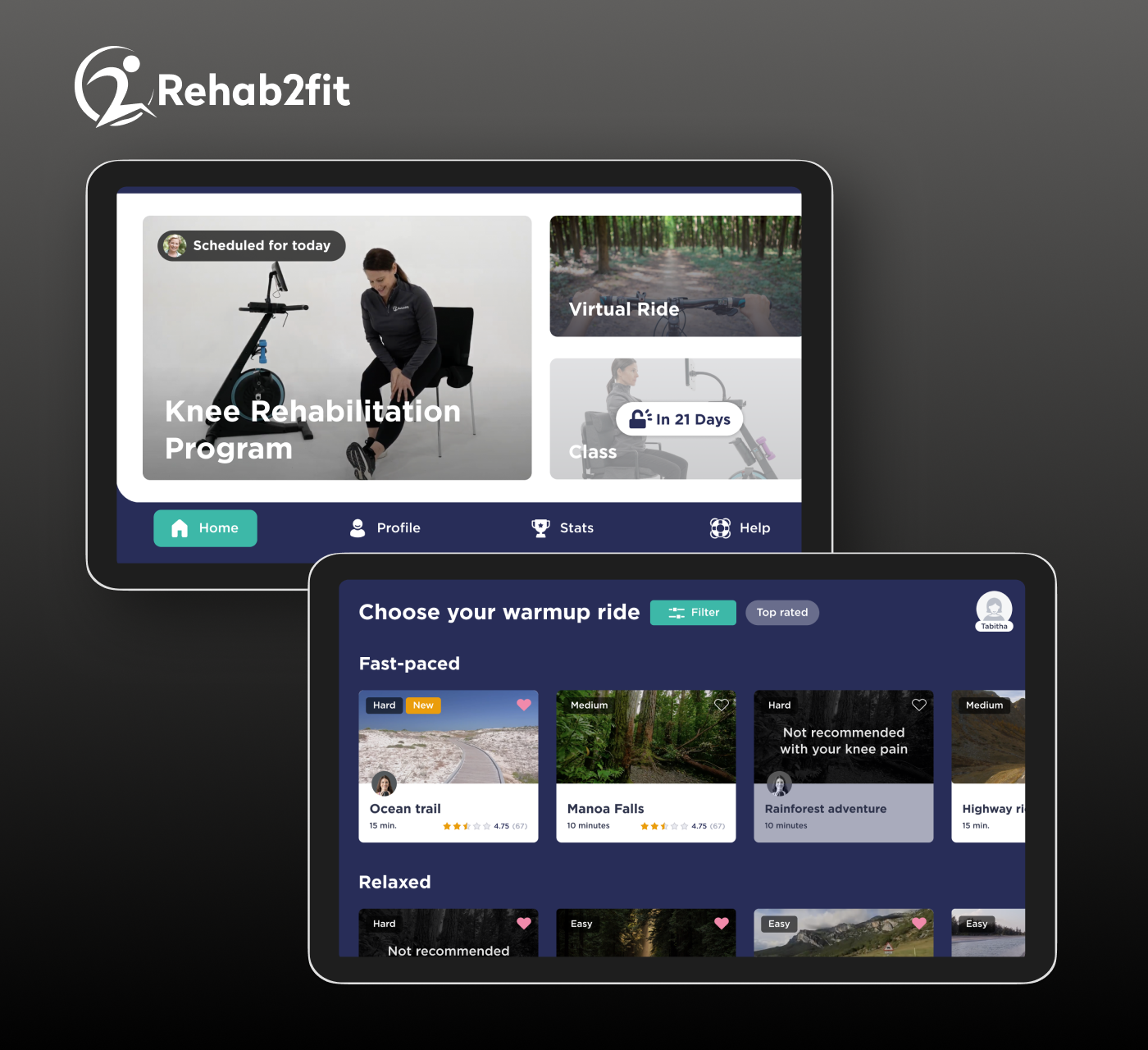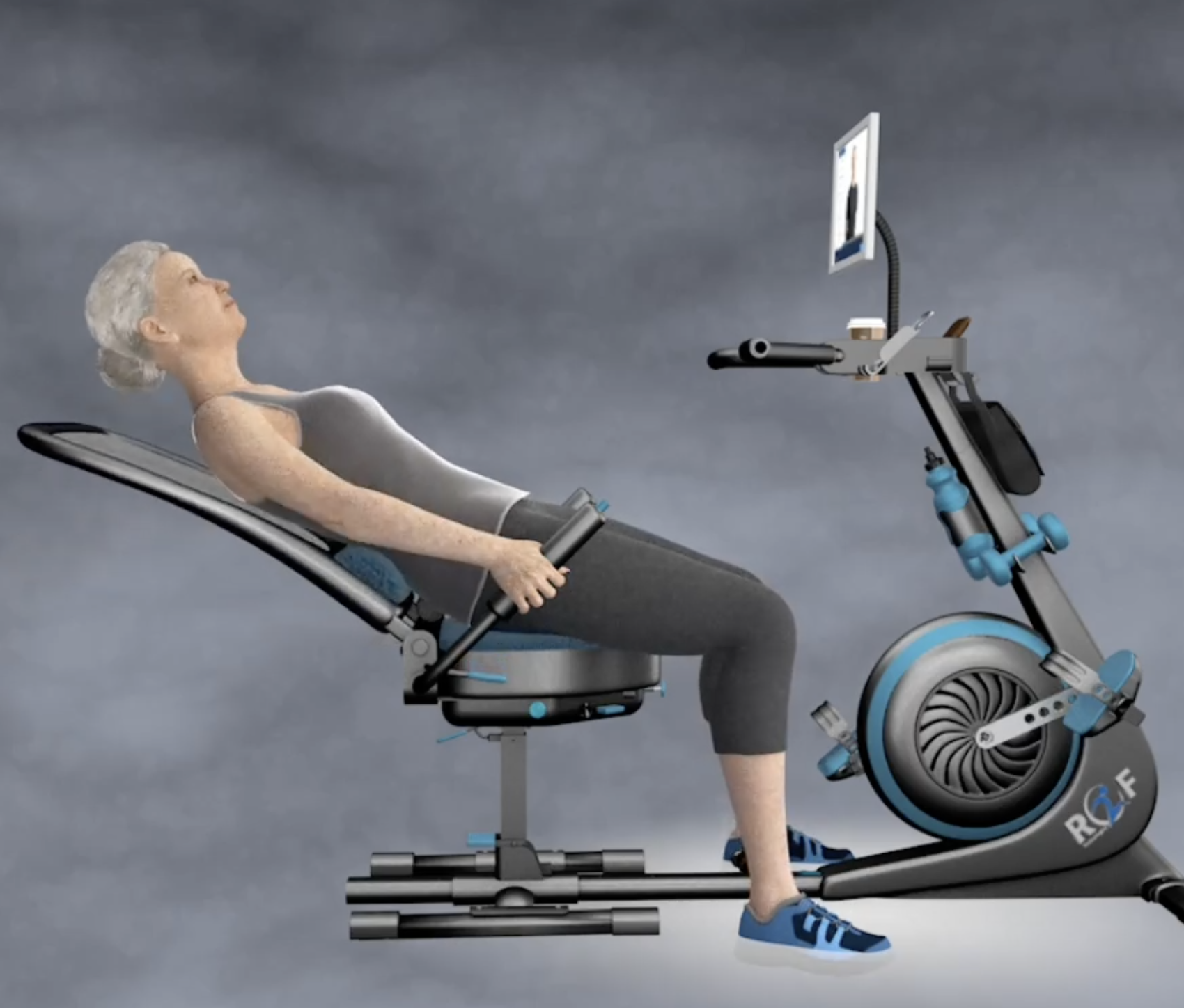Project Overview
As a product designer, I had the opportunity to work on an innovative project aimed at revolutionizing the post-surgery recovery process, specifically for individuals recovering from total knee recovery surgery. Our focus was to refresh an outdated UI and design a customized exercise program, which contains 6-week intervals, that would take users from surgery to full fitness. This program featured a range of components, including Custom Workouts, Cycling Programs, Video Classes, and Rest Days. The uniqueness of our approach lies in the integration of AI that curated exercises and activities based on daily biometric and performance data.
Goals
Our primary goal was to create a dynamic program that adapted to users’ fitness levels and needs. We wanted to provide engaging, personalized exercise routines that users could follow daily, with each session limited to approximately 25 minutes. The program’s structure for each 6-week interval was tailored to the user’s fitness level, ranging from Level 1 to 5. We assumed the system possessed the user’s current fitness level data based on their prior 6-week session.
3 Components of the Session:
Custom Workouts: Our program featured Custom Workouts consisting of personalized exercise sets, each designed to be completed in 25 minutes or less. The unique aspect was that there were millions of potential exercise combinations, ensuring a fresh and tailored experience for users.
Cycling Programs: To add variety and immersion, we introduced Cycling Programs. Users engaged in timed pedaling sessions while enjoying first-person videos of bike riders traversing global trails. The selection of videos was personalized based on the user’s Fitness Level. The program intelligently adjusted pedaling resistance to simulate terrain features. For instance, uphill sections increased resistance, while lower Fitness Levels enjoyed flatter courses.
Video Classes: Our library included pre-recorded instructional videos, spanning from Knee Rehab to Yoga and Explosive Cardio. AI recommendations and Fitness Level-based options ensured users had access to the most suitable videos for their needs.

Key Feature For Data and User Engagement
One of the key features of the program was the submission of performance and biometric data to the servers after each daily workout. This data allowed for continuous tracking and adjustment of the user’s program, ensuring an evolving and customized experience.
Challenges
Our Android app faced three primary challenges:
- User-Centric Approach: We prioritized keeping the user at the center of our design. It was crucial to create an intuitive, user-friendly interface that encouraged participation and progress.
- Intelligent Customization: To convey the system’s intelligence and customization capabilities, our challenge was to make users feel that every workout was tailored to their unique needs and progress.
- User Engagement: We recognized that consistency was the key to successful recovery. To address this, our design focused on motivation and engagement, aiming to keep users committed to their recovery journey.
Conclusion
This project was an exciting opportunity. As the sole product designer on the project, I had the privilege of contributing to a system that not only catered to individual needs but also encouraged users to stay consistent and motivated throughout their recovery. The implementation of AI, data-driven recommendations, and engaging exercise formats made this project a groundbreaking addition to the post-surgery recovery world. It is a prove to what can be achieved between smart technology and human well-being.
Prototypes
Log In & Forget Password here
Profile Creation here
Pedals Setup here
ROM (Range of Motion) test here
User Profile here
Virtual Ride here
Home/Dashboard here







